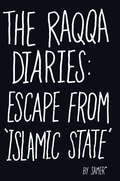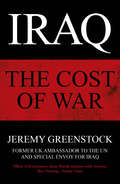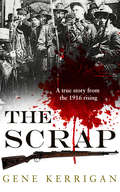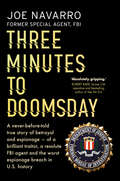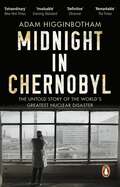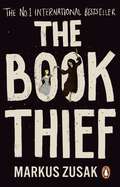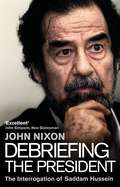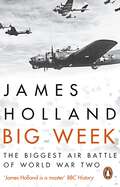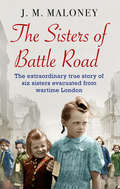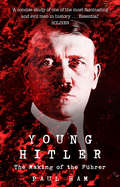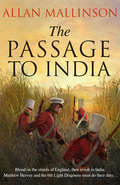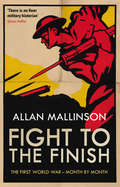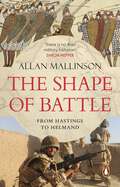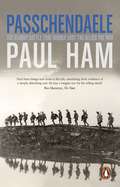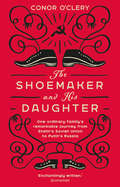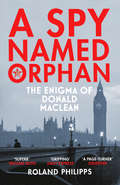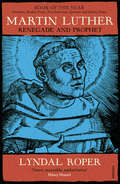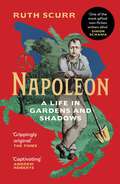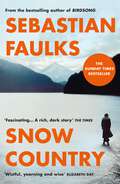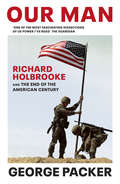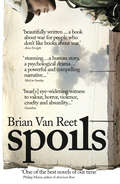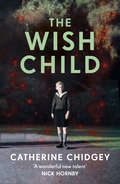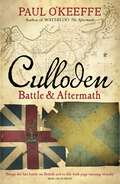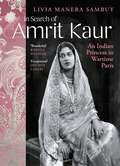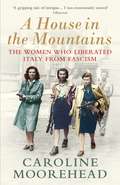- Table View
- List View
The Raqqa Diaries: Escape from Islamic State
by Samer‘Everyone should spend a couple of hours of their life reading it, to remind themselves that, even in the darkest depth of human misery, the bravest souls still exist.’ Sunday TimesSince ISIS occupied Raqqa in eastern Syria, it has become one of the most isolated and fear-ridden cities on earth. The sale of televisions has been banned, wearing trousers the wrong length is a punishable offence, and using a mobile phone is considered an unforgivable crime.No journalists are allowed in and the penalty for speaking to the western media is death by beheading.Despite this, after several months of nervy and often interrupted conversations, the BBC was able to make contact with a small activist group, Al-Sharqiya 24. Finally, courageously, one of their members agreed to write a personal diary about his experiences.Having seen friends and relatives butchered, his community's life shattered and the local economy ruined by these hate-fuelled extremists, Samer is fighting back in the only way he can: by telling the world what is happening to his beloved city.This is Samer's story.'Remarkable . . . rare, intimate . . . Samer is an understated hero of our time.' Anthony Loyd, The Times'A clarion call to all of us that we should not give up. Somewhere there is a voice in the wreckage.' Michael Palin'This is brutal non-fiction, plainly and urgently told.' Robin Yassin-Kassab, Guardian'The simple act of bearing witness is one of the most powerful human responses available . . . The Raqqa Diaries is so important.' Evening Standard
Iraq: The Cost of War
by Sir Jeremy GreenstockTony Blair's decision to back George W. Bush in his attack on Iraq will go down as a defining moment for Britain. First as Ambassador to the UN, and then as Special Envoy for Iraq, the UK’s highest authority on the ground, Sir Jeremy Greenstock was centre stage in the tumultuous days leading up to the Iraq war and witnessed first-hand its tremendous impact. This extraordinary book is a record of what he saw.Greenstock writes openly about US—UK relations, taking his readers behind closed doors and revealing the actions of key players in New York, Washington, London, Paris and the Middle East. To what extent was the Bush administration determined to attack Iraq come what may? What promise did Blair extract in exchange for backing Bush? Was the war legal? What effect is it continuing to have on Britain’s long-term relations with America and Europe?Held back from publication when originally written in 2005, and now revised with a new foreword and epilogue following the publication of the Chilcot Report, Iraq: The Cost of War is a groundbreaking blow-by-blow account of one of the most pivotal and controversial conflicts in recent world history.
The Scrap
by Gene KerriganIn the last hours of the 1916 Easter Rising, 20-year old Charlie Saurin came face to face with his Commander-in-Chief, Patrick Pearse. In a final gamble, Pearse had a desperate plan to save the collapsing rebellion.It required the sacrifice of Saurin and his comrades.The Scrap is the true story of the rising, from first-hand evidence, as seen by one rebel unit - F Company, 2nd Battalion - following them from the first skirmish in Fairview to the inferno of the GPO.Told in the context of some of the major events of that week, the story of F Company brings alive the excitement, the humour, the horror and the contradictions of that decisive moment in the creation of the Irish state.
Three Minutes to Doomsday: An Agent, A Traitor, And The Worst Espionage Breach In U. S. History
by Joe NavarroIt is 1988 and Florida-based FBI agent Joe Navarro divides his time between SWAT assignments, flying air reconnaissance, and working counter-intelligence. A body-language expert with an uncanny ability to “read” those he interrogates, Navarro is known as super-intense – an agent whose work ethic quickly burns out partners. He craves an assignment that will get him noticed by the FBI top brass but then again, as he’ll come to learn: be careful what you wish for . . . It was while on a routine assignment – interviewing a ‘person of interest’, a former US soldier named Rod Ramsay with links to another soldier, Clyde Conrad, recently arrested in Germany as a traitor – that Navarro thought he smelled a rat. He noticed a tic in Ramsay's hand when Conrad’s name was mentioned. Not a lot to go on, but enough for Navarro to insist that an investigation be opened.What followed was extraordinary – and unique in the annals of espionage detection - a game of cat-and-mouse played at the highest level: on one side, an FBI agent who must not reveal that he suspects his target; on the other, a traitor, a seller of his country’s secrets, whose weakness is the thrill he gets from sparring with his inquisitor. To prise from Ramsay the full extent of the damage he had wrought, Navarro had to pre-choreograph every interview because Ramsay was exceptionally intelligent, with the second highest IQ ever recorded by the U.S. Army. It would become an interrogation that literally pitted genius against genius – a battle of wits fought against one of the most turbulent periods of the 20th century – the demise and eventual collapse of the Eastern Bloc and the Soviet Union - and the very real possibility that Russia's leaders, in a last desperate bid to alter history’s trajectory, might engage in all-out war. As Navarro was to learn over the course of nearly fifty exhausting and mind-bending interviews and interrogations, Ramsay had handed the Soviets the knowledge needed to destroy America and its western allies…In Three Minutes to Doomsday, Joe Navarro tells this extraordinary story for the first time - a story of the exposure and breaking of one of the most damaging espionage rings in US history whose treachery threatened the entire world.
Midnight in Chernobyl: The Story of the World's Greatest Nuclear Disaster
by Adam Higginbotham'Superb, enthralling and necessarily terrifying... every step feels spring-loaded with tension... extraordinary.' The New York TimesEarly in the morning of April 26, 1986, Reactor Number Four of the Chernobyl Atomic Energy Station exploded, triggering history’s worst nuclear disaster. In the thirty years since then, Chernobyl has become lodged in the collective nightmares of the world: shorthand for the spectral horrors of radiation poisoning, for a dangerous technology slipping its leash, for ecological fragility, and for what can happen when a dishonest and careless state endangers not only its own citizens, but all of humanity. But the real story of the accident, clouded from the beginning by secrecy, propaganda, and misinformation, has long remained in dispute.Drawing on hundreds of hours of interviews conducted over the course of more than ten years, as well as letters, unpublished memoirs, and documents from recently-declassified archives, Adam Higginbotham has written a harrowing and compelling narrative which brings the disaster to life through the eyes of the men and women who witnessed it firsthand. The result is a masterful non-fiction thriller, and the definitive account of an event that changed history: a story that is more complex, more human, and more terrifying than the Soviet myth.Midnight In Chernobyl is an indelible portrait of one of the great disasters of the twentieth century, of human resilience and ingenuity, and the lessons learned when mankind seeks to bend the natural world to his will--lessons which, in the face of climate change and other threats—remain not just vital but necessary.
The Book Thief: The life-affirming number one international bestseller
by Markus ZusakThis new edition features exclusive early chapter from Markus Zusak's brand new literary novel BRIDGE OF CLAY, out this October 2018.The New York Times and Sunday Times bestseller'A novel of breathtaking scope' Guardian1939. Nazi Germany. The country is holding its breath. Death has never been busier.Liesel, a nine-year-old girl, is living with a foster family on Himmel Street. Her parents have been taken away to a concentration camp. Liesel steals books. This is her story and the story of the inhabitants of her street when the bombs begin to fall.SOME IMPORTANT INFORMATION - THIS NOVEL IS NARRATED BY DEATH
Debriefing the President: The Interrogation of Saddam Hussein
by John NixonA riveting, revealing and news-making account of the CIA's interrogation of Saddam, written by the CIA agent who conducted the questioning. In December 2003, after one of the largest, most aggressive manhunts in history, US military forces captured Iraqi president Saddam Hussein near his hometown of Tikrit. Beset by body-double rumors and false alarms during a nine-month search, the Bush administration needed positive identification of the prisoner before it could make the announcement that would rocket around the world. At the time, John Nixon was a senior CIA leadership analyst who had spent years studying the Iraqi dictator. Called upon to make the official ID, Nixon looked for telltale scars and tribal tattoos and asked Hussein a list of questions only he could answer. The man was indeed Saddam Hussein, but as Nixon learned in the ensuing weeks, both he and America had greatly misunderstood just who Saddam Hussein really was. Debriefing the President presents an astounding, candid portrait of one of our era’s most notorious strongmen. Nixon, the first man to conduct a prolonged interrogation of Hussein after his capture, offers expert insight into the history and mind of America’s most enigmatic enemy. After years of parsing Hussein’s leadership from afar, Nixon faithfully recounts his debriefing sessions and subsequently strips away the mythology surrounding an equally brutal and complex man. His account is not an apology, but a sobering examination of how preconceived ideas led Washington policymakers—and Tony Blair's government —astray. Unflinching and unprecedented, Debriefing the President exposes a fundamental misreading of one of the modern world’s most central figures and presents a new narrative that boldly counters the received account.
Big Week: The Biggest Air Battle of World War Two
by James Holland'James Holland is a master' BBC HistoryIt was to be the battle to end the air war once and for all . . .During the third week of February 1944, the combined Allied air forces based in Britain and Italy launched their first-ever round-the-clock bomber offensive against Germany. The aim was to smash the main factories and production centres of the Luftwaffe and at the same time draw the German fighter force up into the air and into battle. Officially called Operation ARGUMENT, this monumental air assault was very quickly became known simply as Big Week.In the six months up to its launch, for the Allies, the bomber war was not turning out as planned. Raids by the US Eighth Air Force and the RAF deep into Germany were being decimated and falling far short of its purpose. With D-Day drawing ever-closer, that was a massive problem. The Allies needed clear skies to invade. The clock was ticking inexorably.Yet the Luftwaffe was also in crisis. Short of resources, of fuel, and on properly trained pilots, the strain on those still flying was immense, their losses severe. And despite the chaos of their leadership, they were achieving far more than should have been reasonably expected against the superior numbers of the Allied planes.Big Week is the knife-edged story of bomber against flak gun and fighter, but also, crucially, fighter against fighter, as the stakes rose higher and higher. Following the fortunes of pilots, aircrew and civilians from both sides, this is a blistering narrative of one of the most critical periods of the entire war, one that culminated in the largest air battle ever witnessed. It is also one that has been largely forgotten, but which has been brilliantly brought back to life by award-winning historian, James Holland.
The Sisters of Battle Road: The Extraordinary True Story of Six Sisters Evacuated from Wartime London
by J. M. MaloneyIn 1939 Annie Jarman and her six young daughters were evacuated from their south London home and sent to the Sussex countryside to wait out the war. Refusing to be parted, they faced the unknown together, never imagining just how much their lives would change. From the trials and tribulations of leaving London, the destructive horror of the Blitz and terrible family tragedy to tea dances, romances and the triumph of making a new life in the country, The Sisters of Battle Road is the compelling true story of six ordinary girls who carved out a life in extraordinary wartime circumstances. Today, the six young girls – Mary, Joan, Sheila, Kathleen, Patricia and Ann – are six remarkable women who have lived to tell their tale of sisterhood and its unbreakable bonds in the shadow of World War Two.
Young Hitler: The Making of the Fuhrer
by Paul HamWhen Adolf Hitler went to war in 1914, he was just 25 years old. It was a time he would later call the 'most stupendous experience of my life'. That war ended with Hitler in a hospital bed, temporarily blinded by mustard gas. The world that he opened his newly healed eyes on was new and it was terrible: Germany had been defeated, the Kaiser had fled and the army had been resolutely humbled. Hitler never accepted these facts. Out of his fury rose a white-hot hatred, an unquenchable thirst for revenge against the 'criminals' who had signed the armistice, against the socialists who he accused of stabbing the army in the back and, most violently, against the Jews – a direct threat to the master race of his imagination – on whose shoulders he would pile all of Germany's woes.But this was not all about the war; the seeds of that hatred lay in Hitler’s youth.By peeling back the layers of Hitler's childhood, his war record and his early political career, Paul Ham's Young Hitler: The Making of the Führer seeks the man behind the myth. How did the defining years of Hitler’s life affect his rise to power?More broadly, Paul Ham seeks to answer the question: Was Hitler a freak accident? Or was he an extreme example of a recurring type of demagogue, who will do and say anything to seize power; who thrives on chaos; and who personifies, in his words and in his actions, the darkest prejudices of humankind?
The Passage to India: (Matthew Hervey 13) (Matthew Hervey #13)
by Allan MallinsonIt is 1831, riots and rebellions are widespread . . . In England, the new government is facing protests against the attempts of the Tory-dominated House of Lords to thwart the passing of the Reform Bill. In India, relations are strained between the presidency of Madras and some of the neighbouring princely states.Having taken command of the action in Bristol to restore order after one of the bloodiest and most destructive riots in the nation's history, Lieutenant-Colonel Matthew Hervey is out of favour with the new government. But then his old friend, Sir Eyre Somervile, offers him a lifeline. Somervile has persuaded the Court of Directors of the East India Company to approve an increase in the Madras military establishment. Hervey and the 6th Light Dragoons are sent to the princely state of Coorg. The Rajah is in revolt against the East India Company’s terms and Hervey’s regiment is called upon to crush the rebellion. With the stakes raised by an unexpected visitation from his past, for Hervey the question is whether he and his men will get out of this brutal war unscathed?
Fight to the Finish: The First World War - Month by Month
by Allan Mallinson‘Mallinson . . . combines the authority of a soldier-turned-military historian with the imaginative touch of the historical novelist.’ Lawrence James, THE TIMESWe remember months, because months have names, because they are linked to the seasons, and because they have their own character. Looking at the First World War month by month reveals its complexity while preserving a sense of time. From the opening shots to the signing of the armistice, the First World War lasted almost 52 months. It was fought on land, sea and in the air. It became industrial, and unrestricted: poison gas, aerial bombing of cities, and the sinking without warning of merchantmen and passenger ships by submarines. Casualties, military and civilian, probably exceeded 40 million. Four empires collapsed during the course of the war – the German, Austro-Hungarian, Russian and Ottoman. The First World War is almost impossible to comprehend. Day-by-day narratives can be dizzying for the reader wanting to make sense of the conflict as a whole. Freer-flowing accounts, while helping to understand the broader trends and factors, can give less of a sense of the human dimension of time. The month is a more digestible gauge.Based on the Allan Mallinson’s monthly commentaries in The Times throughout the centenary, Fight to the Finish is a new and original portrait of “The War to End War.”
The Shape of Battle: Six Campaigns from Hastings to Helmand
by Allan MallinsonOne of our most distinguished military historians tells the story of six defining battles . . .Every battle is different. Each takes place in a different context - the war, the campaign, the weapons. However, battles across the centuries, whether fought with sticks and stones or advanced technology, have much in common. Fighting is, after all, an intensely human affair; human nature doesn't change. So why were battles fought as they were? What gave them their shape? Why did they go as they did: victory for one side, defeat for the other? In exploring six significant feats of arms - the war and campaign in which they each occurred, and the factors that determined their precise form and course - The Shape of Battle answers these fundamental questions about the waging of war.Hastings (1066) - everyone knows the date, but not, perhaps, the remarkable strategic background.Towton (1461) - the bloodiest battle to be fought on English soil. Waterloo (1815) - more written about in English than any other but rarely in its true context as the culminating battle in the longest war in 'modern' times.D-Day (1944) - a battle within a larger operation ('Overlord'), and the longest-planned and most complex offensive battle in history. Imjin River (1951) - this little known battle of the Korean War was the British Army's last large-scale defensive battle. Operation Panther's Claw (2009) - a battle that has yet to receive the official distinction of being one: an offensive conducted over six weeks with all the trappings of 21st-century warfare yet whose shape and face at times resembled the Middle Ages. The Shape of Battle is not a polemic, it doesn't try to argue a case. It lets the narratives - the battles - speak for themselves.
Passchendaele: The Battle that nearly lost the Allies the War
by Paul Ham'Outstanding . . . thought-provoking, readable and informative' SoldierOne hundred years on...On 18 July 1917, a heavy artillery barrage was unleashed by the Allied forces against an entrenched German army outside the town of Ypres. it was to be the opening salvo of one of the most ferociously fought and debilitating encounters of the First World War.Few battles would encapsulate the utter futility of the war better that what became known as the Battle of Passchendaele. By the time the British and Canadian forces finally captured Passchendaele village on 6 November, the Allies had suffered over 271,000 casualties and the German army over 217,000.Passchendaele: Requiem for Doomed Youth shows how ordinary men on both sides endured this constant state of siege, with a very real awareness that they were being gradually, deliberately felled. Here, Paul Ham tells the story of an army caught in the grip of an extraordinary power struggle – both global and national. As Prime Minister Lloyd George and Commander Haig’s relationship deteriorated beyond repair, so a terrible battle of attrition was needlessly and painfully prolonged.Ham lays down a powerful challenge to the ways in which we have previously seen this monumental battle. Through an examination of the culpability of governments and military commanders in a catastrophe that destroyed the best part of a generation, Paul Ham argues that Passchendaele, far from being a breakthrough moment, was the battle that nearly lost the Allies the war.‘Paul Ham brings new tools to the job, unearthing fresh evidence of a deeply disturbing sort. He has a magpie eye for the telling detail.’ Ben Macintyre, The Times
The Shoemaker and his Daughter
by Conor O'Clery'An arresting and evocative story.' Keggie Carew, author of Dadland'Welcomed by everyone who cares about good writing and human stories.' Richard Lloyd Parry, author of Ghosts of the Tsunami'A tour de force ... O'Clery is a gifted writer.' Luke Harding, bestselling author of CollusionThe Soviet Union, 1962. Shoemaker Stanislav Suvorov is imprisoned for five years. His crime? Selling his car for a profit, contravening the Kremlin’s strict laws of speculation. Laws which, thirty years later, his daughter Zhanna helps to unravel. In the new Russia, yesterday’s crime is today’s opportunity.On his release from prison, social shame drives Stanislav to voluntary exile in Siberia, moving his family from a relatively comfortable, continental life in Grozny, the capital of Chechnya, to frigid, farthest-flung Krasnoyarsk. For some, it is the capital of the gulag. For others, it is the chance to start over again. These are the last days of a Soviet Union in which the Communist Party and KGB desperately cling to power, in which foreigners are unwelcome and travel abroad is restricted, where the queues for bread are daily and debilitating and where expressing views in favour of democracy and human rights can get you imprisoned or sent into exile. The Shoemaker and His Daughter takes in more than eighty years of Soviet and Russian history through the prism of one family – a family author Conor O’Clery knows well: he is married to Zhanna. It paints a vivid picture of a complex part of the world at a seismic moment in its history: of erratic war and uneasy peace; of blind power and its frequent abuse; of misguided ideologies and stifling bureaucracy; of the slow demise of Communism and the chaotic embrace of capitalism. The Suvorovs witness it all. Both intimate and sweeping in scale, this is a story of ordinary lives battered and shaped by extraordinary times.
A Spy Named Orphan: The Enigma of Donald Maclean
by Roland Philipps*A PERFECT GIFT FOR FATHER'S DAY*Donald Maclean was a star diplomat, an establishment insider and a keeper of some of the West's greatest secrets. He was also a Russian spy, driven by passionately held beliefs, whose betrayal and defection to Moscow reverberated for decades.Christened ‘Orphan’ by his Russian recruiter, Maclean was the perfect spy and Britain’s most gifted traitor. But as he leaked huge amounts of top-secret intelligence, an international code-breaking operation was rapidly closing in on him. Moments before he was unmasked, Maclean vanished.Drawing on a wealth of previously classified material, Roland Philipps now tells this story for the first time in full. He unravels Maclean’s character and contradictions: a childhood that was simultaneously liberal and austere; a Cambridge education mixing in Communist circles; a polished diplomat with a tendency to wild binges; a marriage complicated by secrets; an accelerated rise through the Foreign Office and, above all, a gift for deception. Taking us back to the golden age of espionage, A Spy Named Orphan reveals the impact of one of the most dangerous and enigmatic Soviet agents of the twentieth century, whose actions heightened the tensions of the Cold War.
Martin Luther: Renegade And Prophet
by Lyndal RoperSHORTLISTED FOR THE WOLFSON HISTORY PRIZE 2017 SHORTLISTED FOR THE ELIZABETH LONGFORD PRIZE 2017'A magnificent study of one of history's most compelling and divisive figures' Richard J. EvansWhen Martin Luther nailed a sheet of paper to the church door of a small university town in 1517, he set off a process that changed the Western world for ever.Within a few years Luther’s ideas had spread like wildfire. His attempts to reform Christianity by returning it to its biblical roots split the Western Church, divided Europe and polarised people’s beliefs, leading to religious persecution, social unrest and war; and in the long run his ideas would help break the grip of religion on every sphere of life.Yet Luther was a deeply flawed human being: a fervent believer tormented by spiritual doubts; a prolific writer whose translation of the Bible would shape the German language yet whose attacks on his opponents were vicious and foul-mouthed; a married ex-monk who liberated human sexuality from the stigma of sin but who insisted that women should know their place; a religious fundamentalist, Jew-hater and political reactionary who called ‘for the private and public murder of the peasants’ who had risen against their lords in response to his teaching. And perhaps surprisingly, the man who helped create in the modern world was not modern himself: for him the devil was not a figure of speech but a real, physical presence.As an acclaimed historian, Lyndal Roper explains how Luther’s impact can only be understood against the background of the times. As a brilliant biographer, she gives us the flesh-and-blood figure. She reveals the often contradictory psychological forces that drove Luther forward and the dynamics they unleashed, which turned a small act of protest into a battle against the power of the Church.A New Statesman, Spectator, History Today, Guardian and Sunday Times Book of the Year
Napoleon: A Life in Gardens and Shadows
by Ruth ScurrA revelatory portrait of Napoleon to mark the 200th anniversary of his death, written for our own time, not in power politics or epic battles, but through his love of nature and the gardens that gave his revolutionary life its light and shadeNapoleon's gardens range from his childhood olive groves in Corsica, to Josephine's gardens and menageries in Paris, to gardens in Cairo, Rome and on Elba, to the walled garden of Hougoumont at the battle of Waterloo, and ultimately to Napoleon's final garden on St Helena, where Chinese labourers built him a summerhouse where he could sit and scan the sea in his final months.During the French Revolution ideas about nature - human nature, the natural world and exchanges between the two - were at the centre of fierce political debates and events. In this lively and perceptive cultural history, Napoleon is placed firmly in this context: he wanted to see himself as a patron of the sciences and progress, bringing an end to the Revolution and binding up its wounds. In fact he unleashed an era of destruction and war, causing millions of deaths across Europe.In this innovative biography, as uniquely fitting its subject as Ruth Scurr's applauded portraits of Robespierre and John Aubrey, Napoleon emerges a giant figure made human, seen through the eyes of those who knew him best - close witnesses, rich and poor, famed and obscure - in the shade of his gardens. The result is vivid, multidimensional and haunting, throwing us back in time, so that we see him before us, both as the Emperor hunting for glory and the man in an old straw hat, leaning on his spade.
Snow Country: SUNDAY TIMES BESTSELLER
by Sebastian FaulksThe epic new novel from the bestselling author of Birdsong'Wistful, yearning and wise' Elizabeth Day1914: Aspiring journalist Anton arrives in Vienna where he meets Delphine, a woman of deep secrets. Anton is entranced by the light of first love, until his country declares war on hers. 1927: For Lena, life in a small town has been cosseted and cold. When her love affair with a young lawyer crumbles, she leaves to take a post at the snow-capped sanatorium, the Schloss Seeblick. 1933: Anton is sent to write about the mysterious Schloss Seeblick. In this place, on the banks of a silvery lake where the roots of human suffering are laid bare, two people will see each other as if for the first time.'Fascinating... A rich, dark story' The Times
Our Man: Richard Holbrooke and the End of the American Century
by George PackerFrom one of America’s greatest non-fiction writers, an epic saga of the rise and fall of American power, from Vietnam to Afghanistan, told through the life of one man.Richard Holbrooke was one of the most legendary and complicated figures in recent American history. Brilliant, utterly self-absorbed, and possessed of almost inhuman energy and appetites, he was both admired and detested. From his days as a young adviser in Vietnam to his last efforts to end the war in Afghanistan, Holbrooke embodied the postwar American impulse to take the lead on the global stage. He was the force behind the Dayton Accords that ended the Balkan wars, America's greatest diplomatic achievement in the post-Cold War era. His power lay in an utter belief in himself and his idea of a muscular, generous foreign policy. But his sharp elbows and tireless self-promotion ensured that he never rose to the highest levels in government that he so desperately coveted. Holbrooke’s story is the story of the rise and fall of America during its era of supremacy: its strength, drive, and sense of possibility, as well as its penchant for overreach and heedless self-confidence. Drawing on Holbrooke’s diaries and papers, George Packer’s narrative is both intimate and epic in its revelatory portrait of this extraordinary and deeply flawed man, and the elite spheres of society and government he inhabited.
Spoils
by Brian Van Reet*WINNER OF THE WRITERS' LEAGUE OF TEXAS FICTION AWARD 2017*It is the spring of 2003 and coalition forces are advancing on Iraq. Images of a giant statue of Saddam Hussein crashing to the ground in Baghdad are being beamed to news channels around the world. Nineteen-year-old Specialist Cassandra Wigheard, on her first deployment since joining the US army two years earlier, is primed for war.For Abu al-Hool, a jihadist since the days of the Soviet occupation of Afghanistan, war is wearing thin. Two decades of fighting have left him questioning his commitment to the struggle. When Cassandra is taken prisoner by al-Hool’s mujahideen brotherhood, both fighters will find their loyalties tested to the very limits.
The Wish Child: A Novel
by Catherine Chidgey'A wonderful new talent' Nick HornbyGermany, 1939. Sieglinde lives in the affluent ignorance of middle-class Berlin. Erich is an only child living a lush rural life, aware that he is shadowed by strange, unanswered questions. Both children watch as their parents become immersed in the puzzling mechanisms of power.Drawn together as Germany’s hope for a glorious future begins to collapse, the children find temporary refuge in an abandoned theatre amidst the rubble of Berlin. The days they spend there together will shape the rest of their lives.Winner of the New Zealand Book Award for Fiction
Culloden: Battle & Aftermath
by Paul O'KeeffeCharles Edward Stuart's campaign to seize the British throne on behalf of his exiled father ended with one of the quickest defeats in history: on 16 April 1746, at Culloden, his 5,000-strong Jacobite army was decisively overpowered in under forty minutes. Its brutal repercussions, however, endured for months and years, its legacy for centuries.Paul O'Keeffe follows the Jacobite army, from its initial victories over Hanoverian troops at Prestonpans, Clifton and Falkirk to their calamitous defeat on the field of Culloden. He explores the battle's aftermath which claimed the lives, not only of helpless wounded summarily executed and fugitives cut down by pursuing dragoons, but also of civilians slaughtered by vengeful government patrols as they 'pacified' the Highlands. He chronicles the wild, nationwide celebration greeting news of the government victory, the London stage catering to patriotic fervour with new songs like 'God Save the King', popular musical theatre, and operas by Gluck and Handel. Meanwhile, the public was also treated to the grimmer spectacle of Jacobite prisoners, tried for high treason, paying for their participation on block and gibbet throughout the country. Many others - granted 'the King's mercy' - suffered the lingering fate of forced labour on fever-ridden plantations in the West Indies and Virginia. O'Keeffe reveals the unexpected consequences of the rising - mapping the Scottish Highlands to aid military subjugation would eventually lead to the foundation of the Ordnance Survey - and traces the later careers of the battle's protagonists: the Duke of Cumberland's transformation from idolised national hero to discredited 'butcher'; Charles Edward Stuart's from 'Bonny Prince' to embittered alcoholic invalid. While in the long term the doomed Stuart cause acquired an aura of romanticism, the Jacobite Rising of 1745-46 remains one of the most bloody and divisive conflicts in British domestic history, which resonates to this day.
In Search of Amrit Kaur: An Indian Princess in Wartime Paris
by Livia Manera SambuyA lost princess and a vanished world: a remarkable true story that moves from the Punjab of the Raj to 1930s Paris and the cataclysm of the Second World War
A House in the Mountains: The Women Who Liberated Italy from Fascism (The\resistance Quartet Ser. #4)
by Caroline Moorehead'Moorehead paints a wonderfully vivid and moving portrait of the women of the Italian Resistance…an excellent book… She depicts a tragic fate that is timeless, of dreams forged in adversity, shattered by collisions with practical politics' MAX HASTINGS, SUNDAY TIMESThe extraordinary story of the courageous women who spearheaded the Italian Resistance during the Second World WarIn the late summer of 1943, when Italy changed sides in the War and the Germans – now their enemies – occupied the north of the country, an Italian Resistance was born. Ada, Frida, Silvia and Bianca were four young Piedmontese women who joined the Resistance, living clandestinely in the mountains surrounding Turin. They were not alone. Between 1943 and 1945, as the Allies battled their way north, thousands of men and women throughout occupied Italy rose up and fought to liberate their country from the German invaders and their Fascist collaborators. The bloody civil war that ensued across the country pitted neighbour against neighbour, and brought out the best and worst in Italian society. The courage shown by the partisans was exemplary, and eventually bound them together as a coherent fighting force. The women’s contribution was invaluable – they fought, carried messages and weapons, provided safe houses, laid mines and took prisoners. Ada’s house deep in the mountains became a meeting place and refuge for many of them.The death rattle of Mussolini’s two decades of Fascist rule – with its corruption, greed and anti-Semitism was unrelentingly violent, but for the partisan women it was also a time of camaraderie and equality, pride and optimism. They had proved, to themselves and to the world, what resolve, tenacity and, above all, exceptional courage could achieve.
